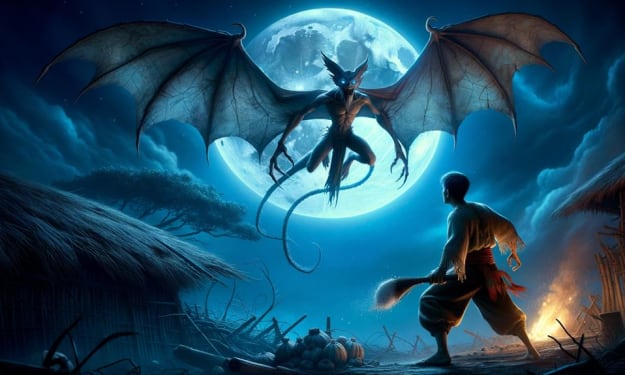Vampires:Myth or Reality?
Exploring the Origins, Evidence, and Cultural impact of Vampires

Introduction
Vampires have long been a subject of fascination for people all over the world. From the mythical Count Dracula to the modern-day Twilight series, the idea of a vampire has captured the imaginations of generations. But the question remains, are vampires real or just a myth? In this article, we will explore the history of vampires, the evidence for and against their existence, and the cultural impact they have had.
Origins of Vampires
The origins of vampires can be traced back to ancient folklore and mythology. In many cultures, there are stories of creatures that drink the blood of the living, often taking the form of bats or wolves. These stories were often used to explain diseases and deaths that were not understood at the time. For example, in some African cultures, it was believed that the dead could rise from their graves and attack the living, causing illness and death.

One of the most famous vampire stories is that of Count Dracula, created by Bram Stoker in his 1897 novel of the same name. Dracula was based on the real-life figure Vlad the Impaler, a 15th-century ruler of Wallachia who was known for his brutality and penchant for impaling his enemies. Stoker’s novel popularized the idea of the vampire as a suave and sophisticated aristocrat who preys on the innocent.
Evidence for Vampires
Despite the many stories and legends about vampires, there is little evidence to suggest that they actually exist. Most of the supposed evidence is anecdotal, consisting of stories and sightings from people who claim to have encountered vampires.

One of the most famous cases of supposed vampire activity occurred in the late 19th century in the town of Exeter, Rhode Island. A woman named Mercy Brown had died of tuberculosis, and her family members began to fall ill soon after. Some villagers began to suspect that Mercy was a vampire and was draining the life force from her family members. They exhumed her body and found that it had not decomposed as much as they expected, leading them to believe that she was, in fact, a vampire. They burned her heart and mixed the ashes with water, which they gave to her sick brother in an attempt to cure him. He died soon after, and the legend of Mercy Brown, the vampire of Exeter, was born.

However, modern science has provided explanations for many of the supposed signs of vampirism. For example, in the case of Mercy Brown, her body may not have decomposed as much as expected because she was buried in a cold, dry environment. Additionally, the practice of burning a vampire’s heart was likely to destroy any bacteria or viruses that may have been present, leading to a temporary improvement in the health of the sick family members.
Cultural Impact of Vampires
Despite the lack of evidence for their existence, vampires have had a significant cultural impact. They have been featured in countless books, movies, and TV shows, and have become a staple of popular culture.
One reason for the enduring popularity of vampires is their versatility as a metaphor. They can be seen as symbols of sexuality, power, and even addiction. In some stories, vampires are portrayed as tragic figures who are cursed with immortality and must watch their loved ones grow old and die while they remain forever young. In others, they are villains who use their powers to prey on the innocent.

One of the most popular vampire franchises of recent years is the Twilight series by Stephenie Meyer. The books and movies follow the relationship between a teenage girl, Bella Swan, and a vampire, Edward Cullen. The series has been criticized for its portrayal of an unhealthy and potentially abusive relationship, but it has also been praised for its exploration of themes such as love, mortality, and identity.
Conclusion
In conclusion, while vampires have been a subject of fascination for centuries, there is little evidence to support their existence. Many of the supposed signs of vampirism can be explained by scientific or cultural factors, and there is no conclusive proof that vampires are real.
Despite this, the cultural impact of vampires cannot be denied. They have become a staple of popular culture and have been used to explore a wide range of themes and ideas. Whether as symbols of power, sexuality, or addiction, vampires continue to captivate audiences all over the world.
Ultimately, the question of whether vampires are real or just a myth may never be answered definitively. But as long as people continue to be intrigued by the idea of these mythical creatures, the legend of the vampire will endure.
About the Creator
Enjoyed the story? Support the Creator.
Subscribe for free to receive all their stories in your feed. You could also pledge your support or give them a one-off tip, letting them know you appreciate their work.






Comments
There are no comments for this story
Be the first to respond and start the conversation.